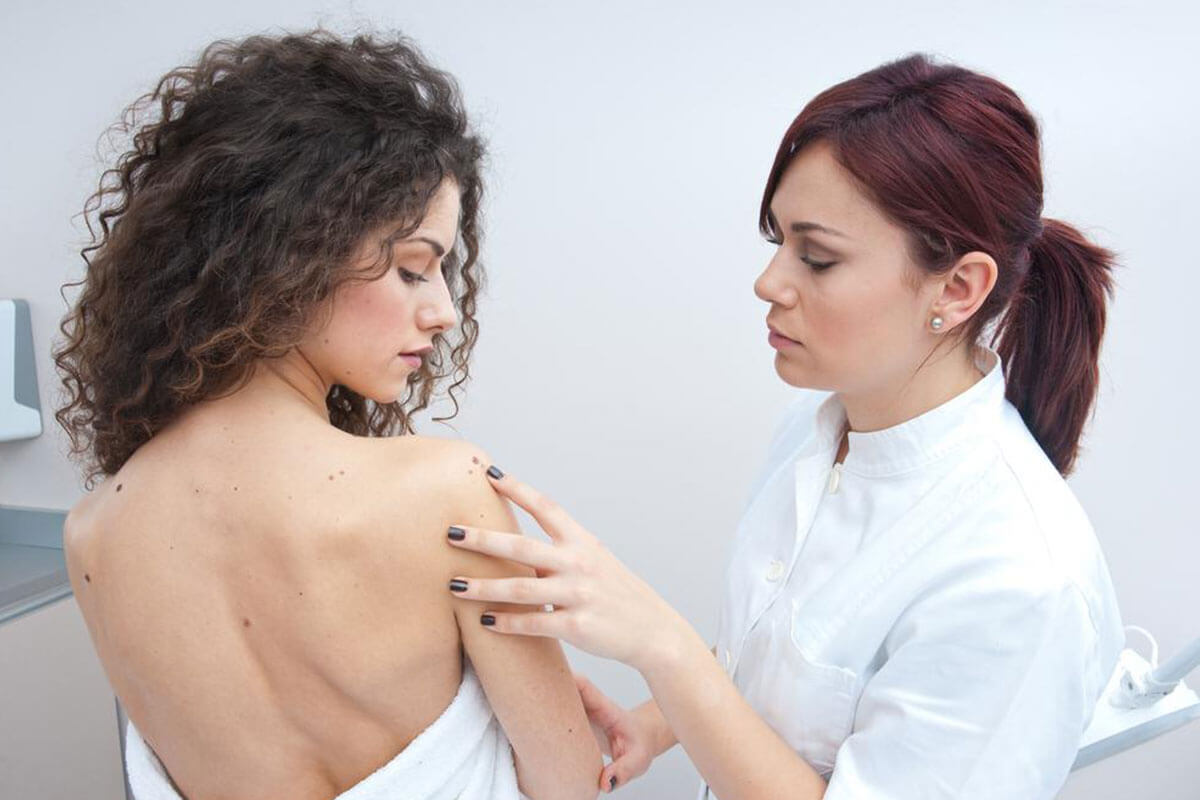Do Not Ignore These Skin Cancer Symptoms
Some skin cancer symptoms are not as obvious as others. These are a few you should actively watch out for.
The common assumption is that skin cancer symptoms and signs can only manifest on areas of skin that are exposed to the sun. While it is true that sun-exposed skin presents the primary area where skin cancer develops, this does not mean that skin cancer symptoms cannot show up in areas that almost never see the sun such as under your nails, on your palms or soles, on your genital area, etc.

Skin Cancer Symptoms to Watch Out For
The first thing to understand is that there are a number of types of skin cancers that are classified under the broad marquee. These include basal cell skin cancers, squamous cell skin cancers, and melanoma. These are a few skin cancer symptoms you ought to wary about:
- If you have a sore or a spot that has consistently refused to heal for more than 4 weeks, it may be more than just a sore.
- Sores or spots that constantly itch, bleed, crust over, or get scabby for more than 4 weeks may be skin cancer symptoms.
- It is important to watch out for ulcers. An ulcer is basically an area that in the stages of breaking down, and is getting deeper. Once erosion takes place, ulcers ought to heal. If you find yourself facing an ulcer that does not heal within 4 weeks, and that too, for no apparent reason, do not ignore it as it is most likely to be one of the many skin cancer symptoms.
What Skin Cancer Symptoms Look Like
Skin cancer symptoms and signs differ depending on the type of skin cancer that is manifesting.
- Basal Cell Skin Cancer Symptoms
Most commonly seen on sun-exposed areas such as the face, ears, hands, back, shoulders, and scalp, basal cell skin cancers are generally small, shiny lumps that are pink or red in color, and slow to grow. Basal cell skin cancer symptoms may also include red scaly patches of skin. Do not ignore these skin cancer symptoms as the lumps/patches tend to either develop into an ulcer, get crusty, or bleed.
- Squamous Cell Skin Cancer Symptoms
Unlike the shiny lumps of basal cell carcinomas, squamous cell skin cancer symptoms present themselves in the form of firmer lumps that are often rough to touch. These are found primarily in sun-exposed areas such as the head, neck, hands, arms, and hands. However, it is important to know that these skin cancer symptoms may also manifest inside the mouth, on the lips, on the genital area, etc. If you see skin cancer symptoms such as hard/scaly/crusty bumps, open sores that itch and bleed for more than a month, scaly patches of skin on the lips, skin nodules, etc., do not waste any time in getting them checked. Squamous cell cancers grow inwards, and tend to migrate to other parts of the body, if they are left untreated. So make haste if you see any of these skin cancer symptoms on your body.
- Melanoma Skin Cancer Symptoms
Melanomas are perhaps the most feared forms of skin cancer. Most people are born with a few moles, while others tend to develop some during their childhood. A regular mole may be flat or raised, roundish in shape, and generally measures less than 6mm across. These moles are generally uniformly colored black, brown or tan. However, if an adult develops a new mole or an old one changes drastically, you may be facing melanoma skin cancer symptoms. Use the ABCDE rule to determine if your mole is a part of skin cancer symptoms you need to get checked.
Check if the mole is Asymmetrical , if the Border of the mole is irregular/blurred/ragged in shape, if the mole is not of uniform Color but has streaks of red/white/blue, if the Diameter is larger than 6mm across, and if the mole is constantly Evolving or changing in size/shape/color.
The key to effective treatment of skin cancer is to keep a watchful eye for skin cancer symptoms and get them checked immediately. Early detection results in best prognosis.




